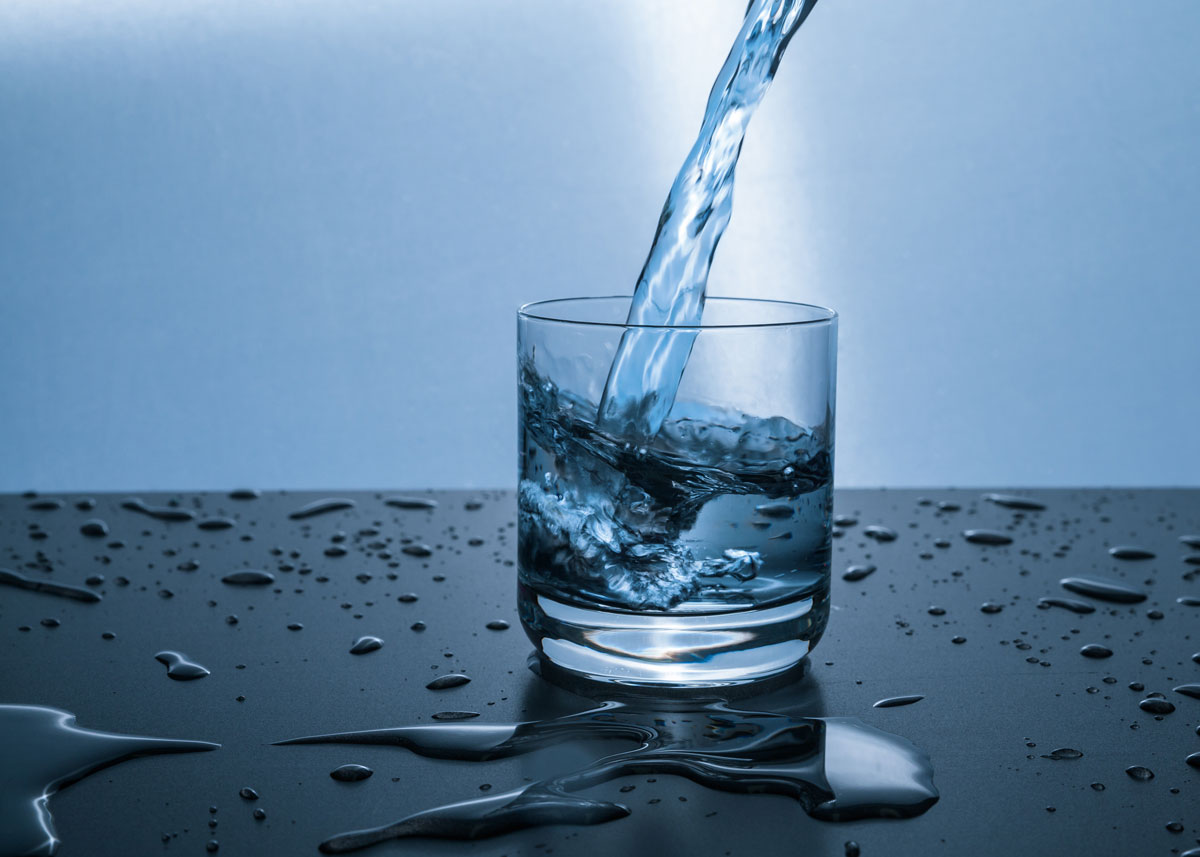
In an article we published nearly 2.5 years ago, we looked at water systems for tiny houses, and what the choices were when trying to connect your wood cabin or cottage to a nearby water source. While we looked at options such as mains water and digging wells, what we didn’t look at was how to treat water coming out of your tap; in particular, hard water.
Hard Water
Hard water occurs when water travels through rocks that are high in calcium and magnesium. One example for such type of rock would be limestone. As water passes through limestone, it picks up calcium and magnesium ions causing water to become hard or, in some cases, very hard. It may be worth pointing out that this is a natural process – there is nothing that can be done to stop it. The ideal water hardness level is generally anything between 3.5 – 7 grains per gallon (GPG), anything above that you should consider taking action.
Hard Water Problems
Hard water is a problem for two reasons:
1. It damages just about anything it comes into contact with.
2. It increases your household spending.
In the plumbing of your tiny house, the scaly deposits created by high amounts of hardness minerals can clog up the pipes, leading to a loss in water pressure. Furthermore, if your cabin has a water heater, whether storage or tankless, hard water will have a dramatic effect on its lifespan, especially if you forget to delime it.
Unfortunately, the damage doesn’t stop when hard water comes out of the tap. Washing machines and dishwashers are affected in the same way as water heaters, with limescale building up wherever hard water touches moving parts. Kettles, other kitchen appliances, and even showerheads are not immune to the problem either.
Finally, hard water has an effect on cleaning products. So whether you’re washing your plates or your clothes, you will spend more money on detergents and water, as you need more of both to get good lathering.
The First Step
The first thing you need to do is find out if you have hard water. Of course, if you can see limescale in your kettle or your water pressure has decreased dramatically, then there is a good chance you know already. However, the best course of action is to have your water tested.
If you are connected or plan to be connected to the local mains, then a quick internet search should be enough. All water companies are required by law to release annual reports on the quality of the water they are supplying to residents. If your water comes from a well, then you have to do your own testing. There are plenty of affordable water hardness test kits that you can order online.
A quick side note before we continue: If you are on a well, it is recommended that you have your water tested every two or three years anyway. This is to make sure that nothing new and nasty has gotten into your supply. If any new major activity occurs in your surrounding area, such as deforestation or urban development, you should have your water checked immediately. In this case, we are talking about more thorough testing, though.
Softening Hard Water

If you had your water tested and got some bad news, there is no need to start making plans to move. Fortunately, softening hard water is fairly easy and it’s not even particularly expensive, especially if you have a tiny home.
To begin with, unlike ‘conventional houses’, there are no multiple bathrooms or toilets. This means that you only need to consider buying a compact softening unit. Of course, you’ll also need to consider where to install your softener.
Cabinet Water Softeners
Cabinet water softeners are ‘all-in-one’ systems. They include the resin and brine tank in one container, which makes them more compact, thus making them easier to fit in a tiny house. Some are even small enough so they are easy to carry, meaning they can be used in more than one place.
With that in mind, if you want something that was designed for use in different places, then a dedicated portable water softener is probably what you need. There are many types, so it’s worth doing your research.
Portable Water Softeners
When we talk about portable water softeners, you may be primarily thinking about weight, but there are other factors that need to be considered. You’ll want to know how much water is softened per minute, how easy it is to add salt, what the components are made of, and how much maintenance it requires – just to name a few.
Speaking of maintenance, if you’re one of those people who thinks spanner is a four-letter word, then you’ll probably prefer something that is very low maintenance. Luckily, we have salt-free water softeners.
Salt-Free Water Softeners
For many, salt-free water softeners are the way to go for different reasons:
· Firstly, they are almost completely maintenance free.
· Additionally, they are much easier to install.
· And finally, they are much, much better for the environment (regular salt-based softener release sodium or potassium in the product water).
To what degree your water is softened varies with salt-free systems. Also, it’s worth noting that the hardness minerals are not removed as they would be with a conventional water softener. However, since these minerals are not harmful, just annoying, this is not a big problem.
Overall, hard water isn’t dangerous and because it’s high in calcium, it can even be considered healthy for people who cannot get enough of it in their diets. Still, although a water softener for your tiny house may not be cheap, it’ll pay for itself quickly by decreasing the damage to plumbing, increasing the lifespan of appliances, and driving down monthly cleaning and electricity costs.








